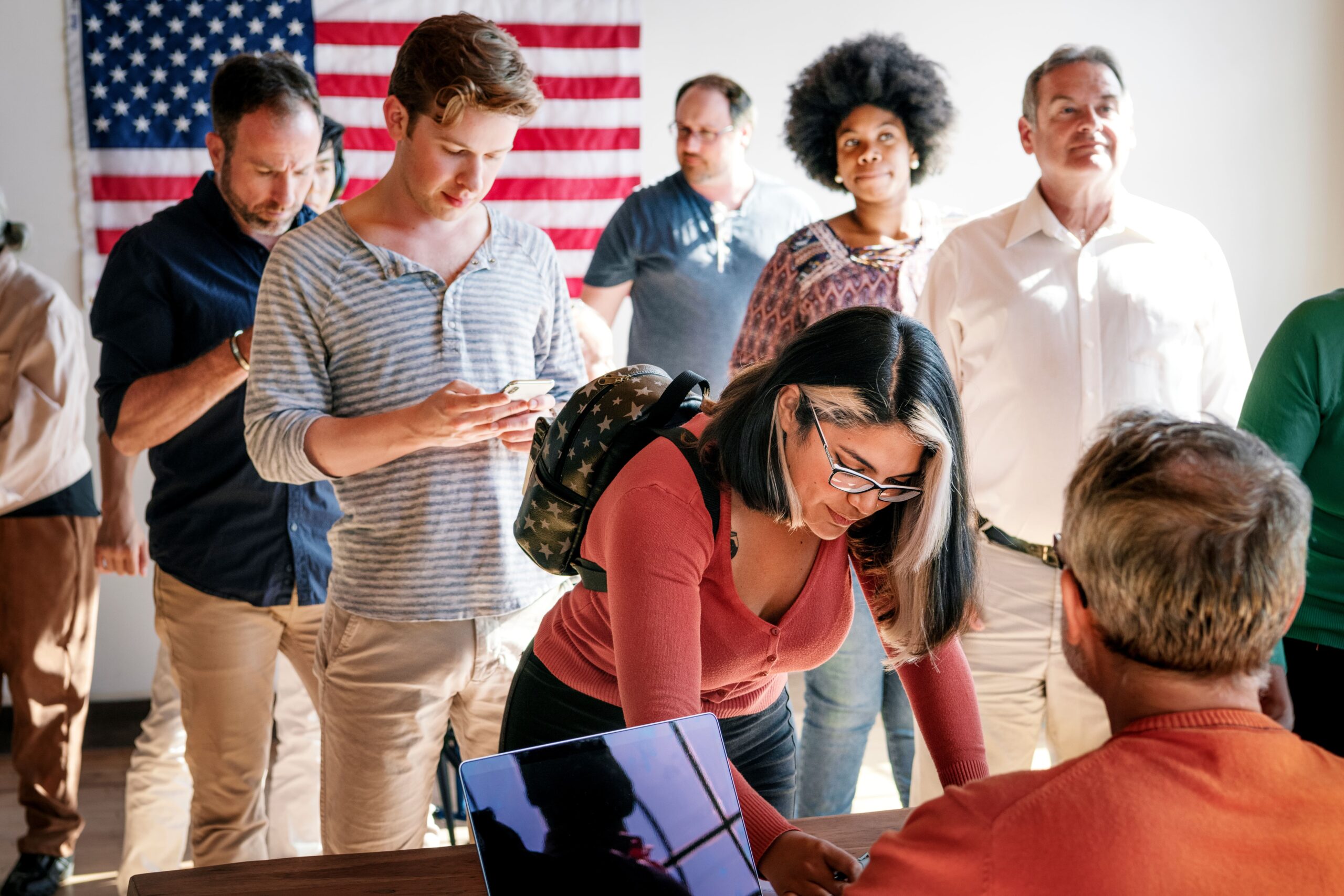Common Strategies
Communications Campaigns that Get Out the Vote
Create a communications strategy that informs the community and grantees about upcoming elections and how to vote. This can include building a page on your foundation website with key election dates; information about where and how to vote; and links or phone numbers for the registrar, board of elections, and/or Secretary of State. Create an easy-to-use toolkit with social media posts and graphics to share with grantees and other partners to spread the word within their own communities. View sample content to include in your communications campaign.
Training and convenings
Bring your grantees together for training on topics such as staying nonpartisan, effective voter outreach, using data, technology, and tools to engage voters, and approaches to reach communities with voting information. Create a space for shared learning, exploration, brainstorming, and collaboration. Don’t worry about having all of the answers and knowledge – invite experts, trainers, and advisors to inform programming on specific topics, or promote trainings organized by others. View examples of ways that foundations have organized training and convenings for their partners.
Grantmaking
Directly support voter engagement activities. This can be done through supplemental grants to existing grantees to build out voter engagement programs for their respective communities. Whether food pantries, health centers, or family service agencies, these groups and the communities served will be stronger as a result of greater voter participation. Alternatively, build out a stand-alone grants program to support groups doing voter engagement work within given communities. View more examples of ways foundations have built voter engagement grant programs.
Investing in voting ecosystems
Support collaborative networks that convene, organize, and build shared strategy among community-based organizations that are invested in improving voter engagement. View these networks as a way to build the backbone of the local voter engagement infrastructure.
Research that informs strategy
Conduct or collaborate on research that aims to identify voting and civic gaps. Use that research to ask questions about what’s needed to engage the community and inform the approach for investing in strategies to improve voting engagement.


Voter Engagement Best Practices for Foundations
Many foundations have articulated the clear connection between their mission and voter engagement and civic life. Including voter engagement as part of priorities and outcomes sets a tone for the organization, can align programs and resources, and communicates the importance that participation plays in achieving mission-aligned outcomes. View examples of how foundations have included voter engagement in their strategic plans.
Start by developing your own understanding of what the rules are with this legal overview so you understand what’s possible. Then engage your legal counsel in strategic conversations that problem solve ways to make an impact with clear and creative approaches for supporting voter engagement work.
Avoid confusing and overly broad terms like “political activity” in grant letters. IRS rules prohibit “partisan political activity” by nonprofits, not voter registration, candidate forums, or other election-related activity done in a nonpartisan manner. In addition, many foundations include unnecessary prohibitions on grantees from using funds for voter engagement. Funders can review their grant language to eliminate limitations that are unnecessarily restrictive. Review these templates to update your grant language to support voter engagement.
Fund organizations that have trusted relationships in the community and are already invested in building community power, leadership, and/or advocacy. In some cases, those groups are already doing voter engagement while others not currently doing voter engagement may be open to receiving grant funds, training, and capacity building to learn how to layer voter engagement on to existing work. Use this sample survey to assess how partners engage in voting work.
From supporting community listening sessions, convenings, and town halls to investing in tools and technology, there are a number of entry points for funders interested in increasing voter engagement in their communities. View the case studies to see how foundations approach their work in voter engagement.
Democracy needs continuous attention to address persistent or new voting challenges and opportunities. What’s more, multi-year investments offer stability and room for organizations to grow and adjust programs. Investing for the long run positions both partners and foundations to meet long-term goals to improve civic health. Learn more about trust-based philanthropy practices for voter engagement.
Many nonprofits report the challenges they experience when donors only provide funding for election work in the short months before Election Day, leaving little time to effectively utilize the resources. Many donors are shifting to providing voter engagement funding a year before the election or during an “off-year” so partners have adequate time to plan and build their capacity to conduct their voter engagement work.
To build support for voter engagement: A number of community foundations are doing proactive outreach to share information with donors about opportunities to invest in voter engagement. This outreach allows community foundations to unlock more dollars to support community efforts to get out the vote.
Many organizations have hired community organizers to manage voter and civic engagement work. If a foundation is not in a position to do that, staff who can support the work can still be identified. Look out for staff who are willing to apply creative thinking to improve voter engagement or staff who understand the nonprofit partners in the field and will structure voting programs to respond to the realities that partners experience.
Many funders understand that their resources can only go so far. Funders find that being in relationship to other foundations and sharing new opportunities, participating in collaboratives, or establishing joint funding opportunities enables the extended reach and impact of dollars and addresses unmet needs among grantees. View a list of voter engagement funder networks and collaboratives.




